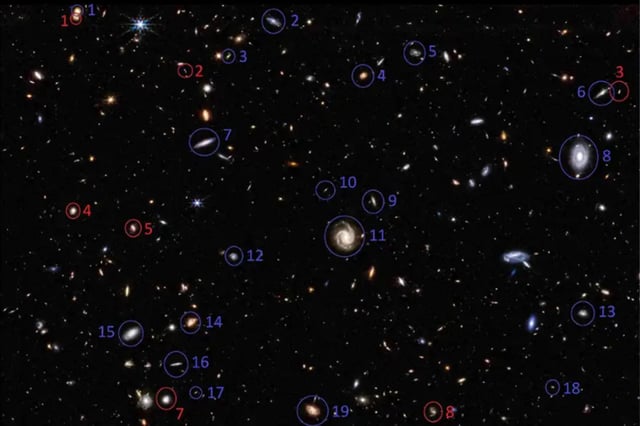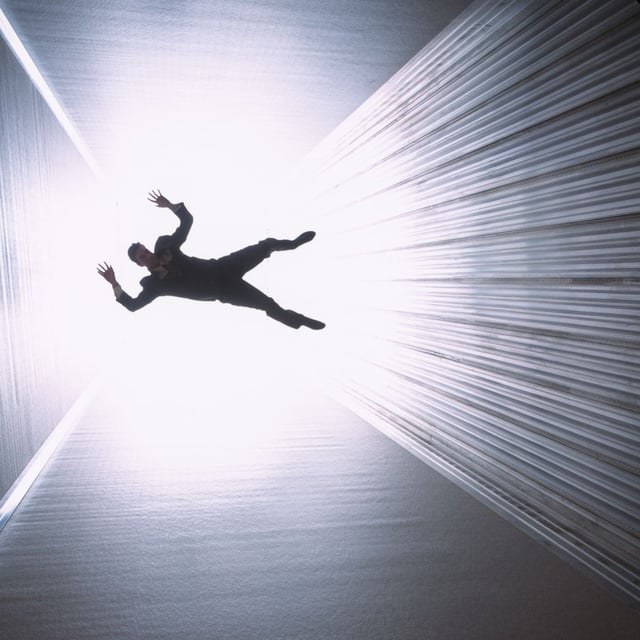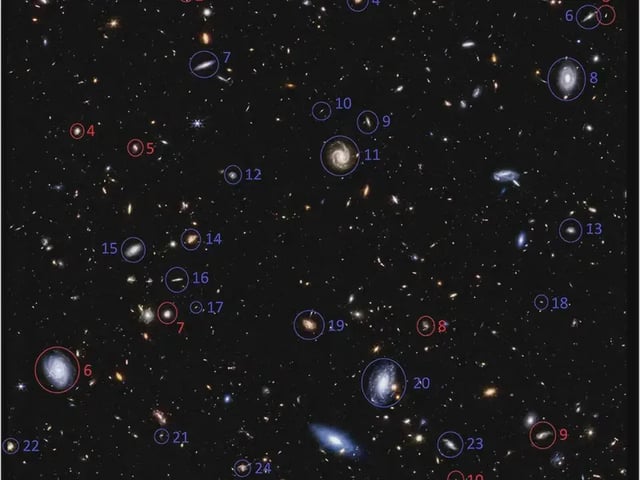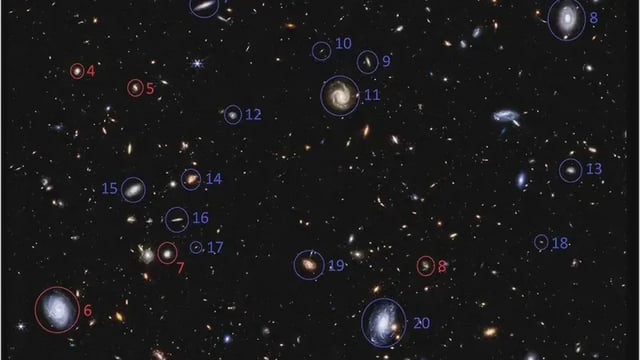Overview
- NASA's James Webb Space Telescope observed that two-thirds of 263 galaxies rotate opposite to the Milky Way, defying expectations of isotropic distribution.
- This rotation imbalance raises questions about the assumption that the universe appears uniform in all directions.
- One hypothesis, black hole cosmology, suggests the universe may exist within a rotating black hole, influencing galaxy dynamics.
- Alternative explanations include observational bias from Earth's position and the Doppler shift effect, which could make certain galaxies appear brighter.
- The findings may require recalibrating distance measurements, potentially resolving discrepancies in the universe's expansion rates and other cosmological puzzles.



